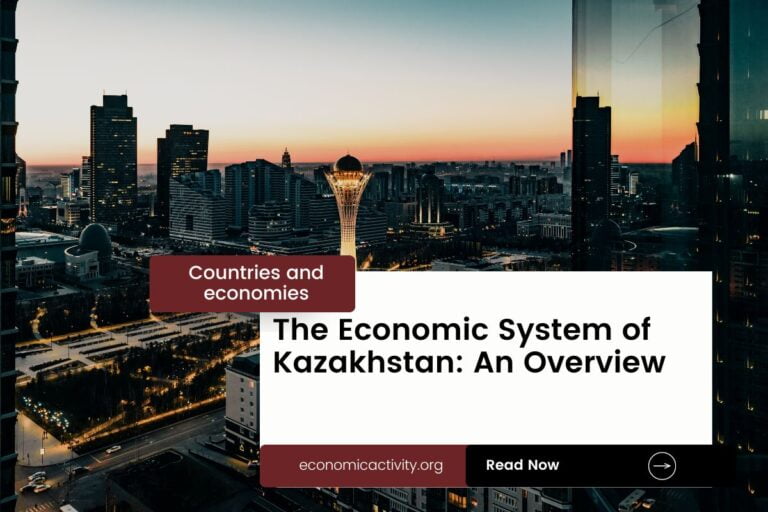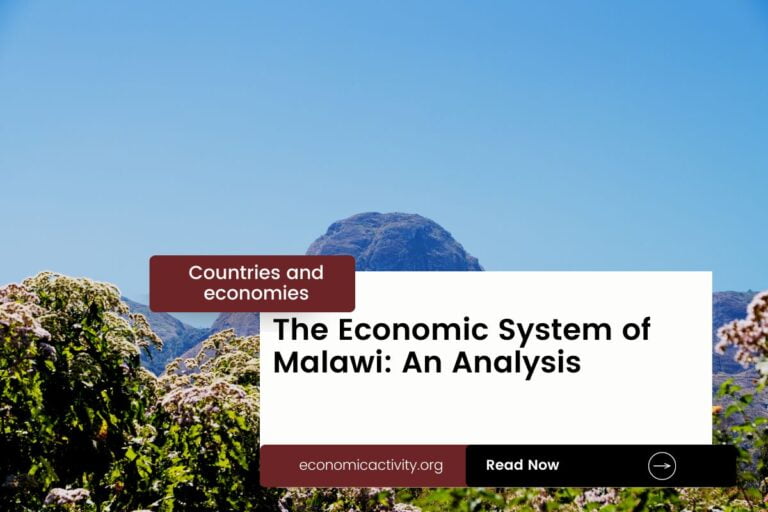Belarus, with a population of 9,228,071, is ranked 95th in the world, just behind the United Arab Emirates. Located in Eastern Europe, Belarus covers a total area of 207,630 square kilometers, ranking 82nd globally, just below Guyana.
Belarus, with a GDP of $72,793,457,588.44 in 2022, holds the 77th rank globally. It is closely followed by Ghana, with a GDP of $73,766,052,451.53. In terms of GDP per capita, Belarus ranks 84th with $7,888.26.
The country trailing behind Belarus in this aspect is Dominica, with a GDP per capita of $8,351.19. Despite its ranking, Belarus faces economic challenges but continues to strive for growth and stability in its economy.
What are the economic activities of Belarus?
- Primary activities: 8.1% of GDP.
- Secondary activities: 40.8% of GDP.
- Tertiary activities: 51.1% of GDP.

Primary Sector of Belarus
Belarus’s primary sector, focused on agriculture, thrives due to its favorable climate and abundant natural resources. With 40.28% of the country’s land dedicated to agriculture, Belarus produces a diverse range of products including milk, sugar beets, potatoes, wheat, triticale, barley, maize, rapeseed, rye, and apples.
Despite agriculture contributing 8.1% to the GDP, these products are vital to the sector. The variety of crops and animal products highlights the sector’s importance, providing sustenance and raw materials crucial for the country’s agricultural economy.
With a diverse geological landscape, the primary sector thrives on abundant natural resources like timber, peat, oil, gas, granite, limestone, marl, chalk, sand, gravel, and clay. These resources play a vital role in driving the economy through industries such as forestry, mining, and construction.
Belarus’s oil economic activity is significant, with a daily production of around 33,973 barrels, ranking 42nd globally. The country holds 198 million barrels in reserves, representing 0.01% of the world’s total reserves. This production contributes to the country’s economic growth and stability, diversifying its primary sector and supporting industries such as energy and manufacturing.
Belarus’s gas production of 30 million m³ in 2020 contributes significantly to its economy, ranking 89th globally.
Secondary Sector of Belarus
What is the secondary sector or what are secondary activities?
The secondary sector involves industries that transform raw materials from primary activities into finished products for consumption. In Belarus, main industrial products include metal-cutting machine tools, tractors, trucks, motorcycles, synthetic fibers, textiles, refrigerators, washing machines, and household appliances.
In 2023, Belarus’ manufactures exports accounted for only a small percentage of the total exports, indicating their limited significance in driving the country’s economy.
Tertiary sector of Belarus
What is the tertiary sector or what are tertiary activities?
The tertiary sector in Belarus encompasses various services where individuals provide knowledge and time to enhance productivity and meet needs. Key activities include healthcare, education, banking, communication, transportation, and security services. These sectors play a vital role in the country’s economy, offering intangible goods and expertise to both consumers and businesses.
Of particular importance, Belarus’ economy significantly relies on tourism, contributing substantially to its GDP. With 11,832,000 annual arrivals and a tourist arrival ratio of 1.2822 per capita, popular destinations like the historic city of Mir and the Belovezhskaya Pushcha National Park attract visitors from around the world, driving economic growth and employment opportunities.
Another example of tertiary economic activity is the mobile cellular sector, with approximately 11.8 million subscriptions, supporting technological growth by enhancing connectivity, fostering innovation, and enabling digital services.
Military Activities and Economic Sectors of Belarus
The military is a strong example of many economic activities in a country. In Belarus, military spending supports various sectors. The primary sector provides resources needed for military use, while the secondary sector focuses on making military equipment. The tertiary sector includes services offered by the military, and the quaternary sector is about research and development. Lastly, the quinary sector involves high-level decisions and strategies for military operations.
In 2023, Belarus had a military expenditure of 1,403.1 million US dollars, which is 1.20% of its GDP. The country has an active military force of 45,350 personnel, resulting in about 46.7 active military members for every 1,000 people in the population.
International Trade of Belarus
Import Activities of Belarus

Belarus heavily relies on imports, with a total of $4.2 billion in 2023, accounting for 57.87% of its GDP.
Belarus imports a variety of goods including cars, packaged medicine, fabric, plastic products, and vehicle parts/accessories. Its main import partners are China (26%), Poland (15%), Germany (12%), Lithuania (12%), and Turkey (9%). These imports play a crucial role in supporting the country’s economy and meeting the needs of its population.
Exports Activities of Belarus

Belarus’s total exports in 2023 amounted to $46,375,427,898.59, with exports accounting for 63.71% of GDP. Export activities play a crucial role, indicating high importance in driving the country’s economic growth and stability.
Belarus primarily exports fertilizers, refined petroleum, rapeseed oil, wood, and beef. Its main export partners are China (15%), Ukraine (12%), Poland (9%), Kazakhstan (8%), and Lithuania (8%).
Belarus economy challenges in 2024
In 2024, Belarus faces challenges as declining Russian energy subsidies loom. Growing public debt and strong currency pressures drive higher inflation. Price controls on essentials strain the economy. Public sector wage hikes clash with a fragile private sector, risking household income and growth.




Leave a Reply